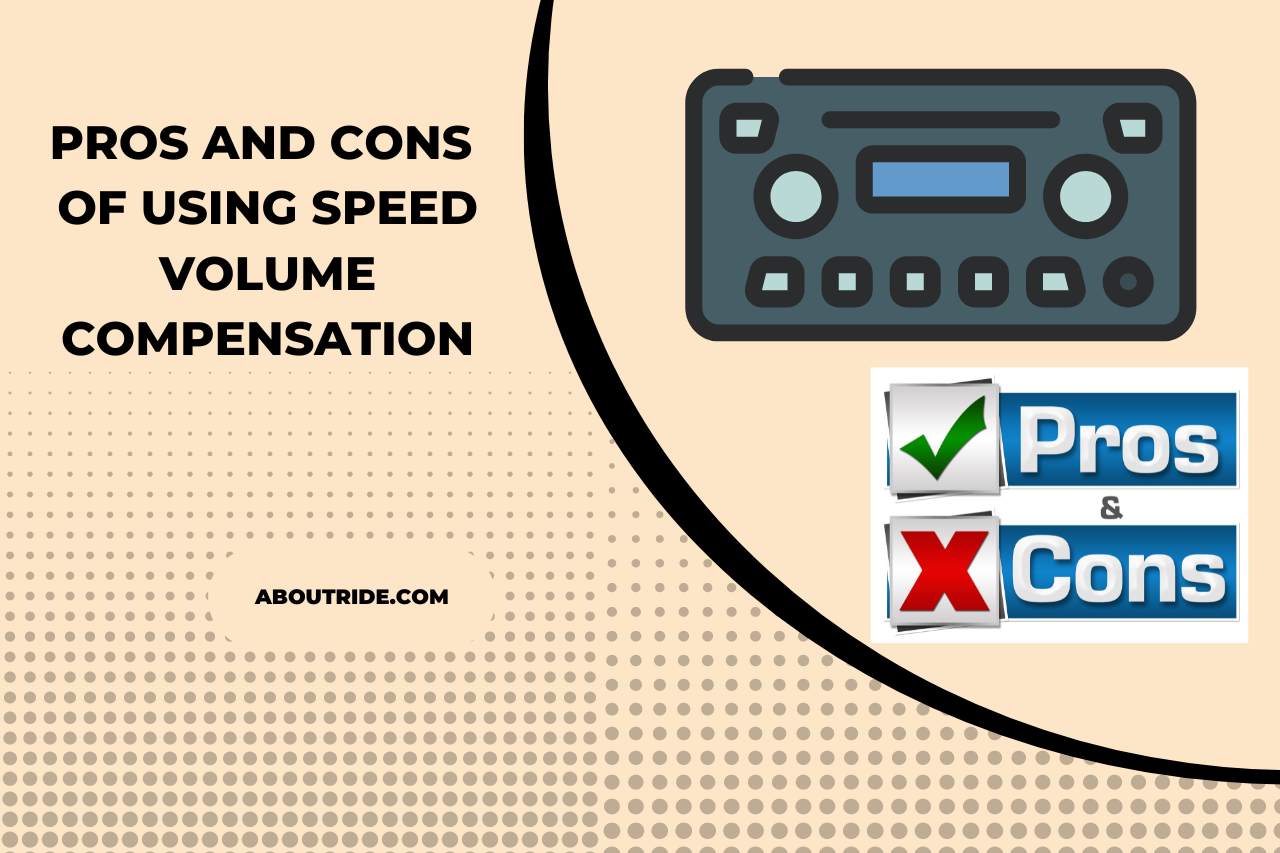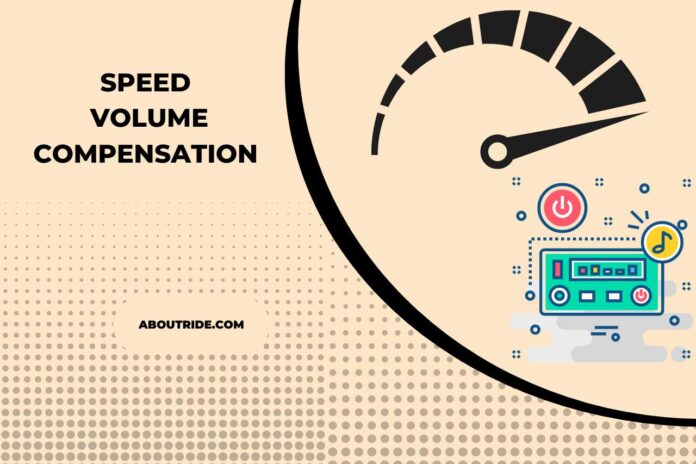When on lengthy car drives, enjoying your favorite music is an enjoyable leisure pastime that you may take in for hours. The noise of the wind as well as pavement rash, yet, might be a little distracting while driving at elevated speeds. Vehicles today come with amenities like “Speed Volume Compensation.”
The purpose of SVC plus its workings will be covered in this article. Discover the advantages and disadvantages of employing SVC, as well as how to modify it.
What is Speed Volume Compensation and How does It Work?
Today’s automobiles include a technology called speed-compensated loudness that automatically changes the level of your car audio as you pace.
A speed-compensated level allows you to comprehend your audio better regardless of how quickly you are driving since the more background noise is generated when driving, the louder it will be.
Manufacturers integrate a speedometer input into the car’s radio and send it to the CAN information network, which allows the stereo level to get adjusted remotely. The interface receives data from the speedometer, and when the speed rises, it also increases the sound volume.
The SCV settings may be changed by going to the options menu inside the automobile, while some drivers choose to totally disable the vehicle’s automatic controls for volume. The SCV may change the level, treble notes, and bass of the automobile audio system.
Why does My Car Audio System have Speed Volume Compensation?
This noise outside, including the road, wind, engines, etc., may be detected by the speed-responsive volume adjustment. After then, it keeps an eye on the sound system’s volume to make up for the noise that isn’t wanted. As a result, you are able to clearly perceive the speakers.
You could notice the corresponding button on the sound system’s submenu, provided your car offers this capability. When the function is activated, when you modify the speed, the audio, basses, as well as treble settings are adjusted by themselves. It’s a fantastic feature since you don’t have to make any adjustments; you can just concentrate on driving.
How to Adjust Speed Volume Compensation on a Vehicle?
Here’s how to put it up; it’s not too difficult.
Go to the dashboard display. Use the controls or keys to adjust settings on the dashboard’s LCD screen. Choose “Settings.” Tap “Sound.” Choose Speed Compensated Volume under Sound by scrolling down.
Choose from None, Low, Medium, or High as the setting. Choose the desired selection, then enjoy the music system as it adjusts its volume in accordance with your movement.
The amount of road noise the system will muffle depends on how high the SCV setting is on your car. Driving noises are louder whenever the SCV is on low, for instance, than they are whenever the SCV is on high when traveling at 60 mph.

Pros and Cons of Using Speed Volume Compensation
Pros
Consistently Good Listening Pleasure
In spite of the vehicle’s velocity, the music level is kept constant thanks to speed volume adjustment. With no requirement for manual changes, it makes up for the rise in outside noise and gives passengers a well-balanced sound experience.
Enhanced Safety
SVC does away with the necessity of drivers having to adjust the sound level while traveling by itself modifying it. Minimizing interruptions and maintaining attention on the roadways improves overall safety.
Comfort for Passengers
All passengers in the car benefit from SVC since it makes sure that audio remains audible and pleasurable for everybody, regardless of where they are seated. It removes the need for customers to request volume changes, which enhances the smoothness of the journey.
Maintaining Sound Quality
SVC automatically adjusts the level to preserve the best audio quality rather than turning up the sound level at greater speeds to cancel out outside noise. By preventing audio distortions or cutting, the authenticity of the audio material being played is maintained.
Cons
Disparate Performance
The efficiency of SVC may differ according to the positioning and strength of the detectors or mics, the sound system of the automobile, and its audio quality.
Desires of Each Person
As their opinions of the ideal volume levels might vary from the automatic changes provided by SVC, some people might want to have human control throughout the audio level.
Available and Compatible
Speed Sensitive Volume Management is not a feature found in every car. For further information on whether a certain car model has this function, look at the specs.
The Difference Between Speed Compensated Volume And Automatic Sound Leveling
They are comparable to each other. Your car might have a speed-compensated volume setting that helps it regulate sound based on speed. However, as the speed reaches 20 MPH, the Automatic Sound Leveling option enables you to detect loud noises.
The goal of automated sound leveling and speed-compensated loudness is quite similar. The latter makes sure that the sound level is constant, louder, or softer than necessary so that customers can hear everything clearly when it is playing through the audio inside your automobile.
Automated Sound Leveling altered the detected level of noise both within and outside the automobile, whereas Speed Compensated Volume changed dependent on the vehicle’s speed.
Three microphones are used by the JBL entertainment system available on Toyota automobiles, which includes the Automatic Sound Setting function, to identify noise.
Three microphones are used by Toyota vehicles to measure the level of the audio system and modify it in accordance with the amount of noise generated within and outside the vehicle.
Does Speed Volume Compensation Affect Audio Quality or Clarity?
Each person has a unique experience. Some individuals could adore the music sound once the SVC is disabled. However, the majority of listeners value consistency in music quality, which is where SVC excels.
This technique ensures that you always hear crystal-clear radio or music, even whether you’re in a busy or noisy environment. In a calm environment, switching off the SVC could provide you with improved sound.
However, it is dangerous to frequently alter the level while driving. Therefore, SVC was developed by automakers so that you could enjoy greater sound while concentrating on driving. Nevertheless, you may test it out by riding in both scenarios and figuring out which is preferable for you.
How does Speed Volume Compensation Adjust Audio Levels in a Vehicle?
The speed-compensated volume function detects numerous road-related ambient sounds, including engine, wind, as well as road noise.
Following the noise detection, it keeps an eye on the stereo’s volume and performs the appropriate changes.
You can plainly hear the news coming from your audio through this procedure. An indication button is included on the interface of the audio system in vehicles having this capability.
When switched on, the acceleration of your vehicle automatically adjusts all musical levels, including the bass, treble, plus sound.
Although the function automatically changes the music system level in your car, you may still opt to change the degree of sensitivity of the audio system.
Watch this one,
Video Credits – Curtiss Ryan Honda
You May Also Like
